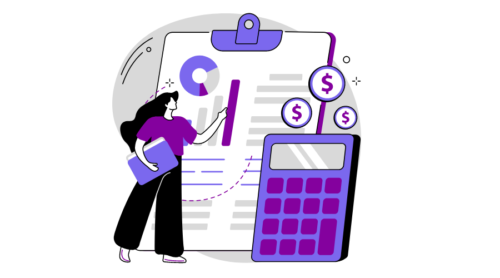ELASTICITY OF DEMAND: UNDERSTANDING CONSUMER RESPONSIVENESS
Elasticity of Demand: Understanding Consumer Responsiveness
Elasticity of demand is a fundamental concept in economics that measures how responsive consumers are to changes in price, income, or other factors affecting their purchasing decisions. It plays a crucial role in helping businesses and policymakers make informed decisions about pricing, taxation, and market strategies. In this article, we will delve into the concept of elasticity of demand, its various types, and its practical implications.
1. What is Elasticity of Demand?
Elasticity of demand, often referred to simply as “elasticity,” is a measure of how sensitive the quantity demanded of a good or service is to changes in its price. In other words, it tells us how much consumers will alter their buying behavior in response to changes in price.
Key Point: Elasticity of demand quantifies consumer responsiveness to price changes.
2. The Types of Elasticity
There are several types of elasticity of demand, each focusing on a different factor affecting consumer responsiveness:
a. Price Elasticity of Demand (PED)
Price elasticity of demand measures the responsiveness of quantity demanded to changes in the price of a good or service. It is calculated using the following formula:
PED=% change in quantity demanded% change in price
- Elastic Demand (PED > 1): If PED is greater than 1, the good is considered elastic. This means that consumers are highly responsive to price changes, and a small price increase will lead to a proportionally larger decrease in quantity demanded.
- Inelastic Demand (PED < 1): When PED is less than 1, the good is considered inelastic. Inelastic goods have consumers who are relatively unresponsive to price changes, and quantity demanded changes by a smaller percentage than the price change.
- Unitary Elasticity (PED = 1): A PED of 1 indicates unitary elasticity, where the percentage change in quantity demanded is exactly equal to the percentage change in price. Total revenue remains constant in this case.

b. Income Elasticity of Demand (YED)
Income elasticity of demand measures how changes in consumer income affect the demand for a good or service. It is calculated using the following formula:
YED=% change in quantity demanded% change in income
- Normal Goods (YED > 0): If YED is positive, the good is considered a normal good. As consumer income rises, the demand for normal goods increases, and vice versa.
- Inferior Goods (YED < 0): Inferior goods have a negative YED, meaning that as consumer income rises, the demand for these goods decreases. These are often replaced by higher-quality alternatives.
c. Cross-Price Elasticity of Demand (XED)
Cross-price elasticity of demand measures how the price of one good affects the demand for another related good. It is calculated using the following formula:
XED=% change in quantity demanded of Good A% change in price of Good B
- Substitute Goods (XED > 0): When XED is positive, it indicates that the two goods are substitutes. An increase in the price of one will lead to an increase in the demand for the other.
- Complementary Goods (XED < 0): Negative XED values suggest that the two goods are complements. A price increase in one good will result in a decrease in the demand for the other.
3. Practical Implications
Understanding elasticity of demand has several practical implications for businesses and policymakers:
a. Pricing Strategies
Businesses can use knowledge of price elasticity to set optimal prices for their products. For elastic goods, lowering prices may increase revenue, while for inelastic goods, price hikes may have a limited impact on sales.
b. Taxation Policies
Governments can use elasticity information to design taxation policies. Taxing inelastic goods can generate more revenue without significantly reducing consumption, while taxing elastic goods may lead to decreased consumption and lower tax revenue.
c. Forecasting
Elasticity helps in predicting consumer behavior in response to changes in market conditions. This information is invaluable for market research and demand forecasting.
d. Subsidy Allocation
Governments can allocate subsidies to industries based on their elasticity of demand. Subsidies can help industries with inelastic demand remain competitive and support those with elastic demand during price fluctuations.
Elasticity of demand is a vital concept that offers insights into how consumers respond to various economic factors. Whether you are a business owner, economist, or policymaker, understanding the different types of elasticity can help you make informed decisions and navigate the complex world of supply and demand with greater precision. By considering consumer responsiveness, you can develop strategies that optimize pricing, taxation, and resource allocation for a more efficient and equitable economy.


